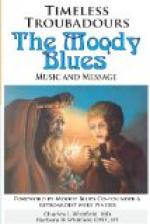Enough has now been said to show that troubadour lyric poetry, regarded as literature, would soon produce a surfeit, if read in bulk. It is essentially a literature of artificiality and polish. Its importance consists in the fact that it was the first literature to emphasise the value of form in poetry, to formulate rules, and, in short, to show that art must be based upon scientific knowledge. The work of the troubadours in these respects left an indelible impression upon the general course of European literature.
CHAPTER IV [41]
THE EARLY TROUBADOURS
The earliest troubadour known to us is William IX, Count of Poitiers (1071-1127) who led an army of thirty thousand men to the unfortunate crusade of 1101. He lived an adventurous and often an unedifying life, and seems to have been a jovial sensualist caring little what kind of reputation he might obtain in the eyes of the world about him. William of Malmesbury gives an account of him which is the reverse of respectable. His poems, of which twelve survive, are, to some extent, a reflection of this character, and present a mixture of coarseness and delicate sentiment which are in strangely discordant contrast. His versification is of an early type; the principle of tripartition, which became predominant in troubadour poetry at a later date, is hardly perceptible in his poems. The chief point of interest in them is the fact that their comparative perfection of form implies a long anterior course of development for troubadour poetry, while we also find him employing, though in undeveloped form, the chief ideas which afterwards became commonplaces among the troubadours. The half mystical exaltation inspired by love is already known to William IX. as joi, and he is [42] acquainted with the service of love under feudal conditions. The conventional attitudes of the lady and the lover are also taken for granted, the lady disdainful and unbending, the lover timid and relying upon his patience. The lady is praised for her outward qualities, her “kindly welcome, her gracious and pleasing look” and love for her is considered to be the inspiration of nobility in the lover. But these ideas are not carried to the extravagant lengths to which later poets pushed them; William’s sensual leanings are enough to counterbalance any tendency to such exaggeration. The conventional opening of a love poem by a description of spring is also in evidence; in short, the commonplaces, the technical language and formulae of later Provencal lyrics were in existence during the age of this first troubadour.




